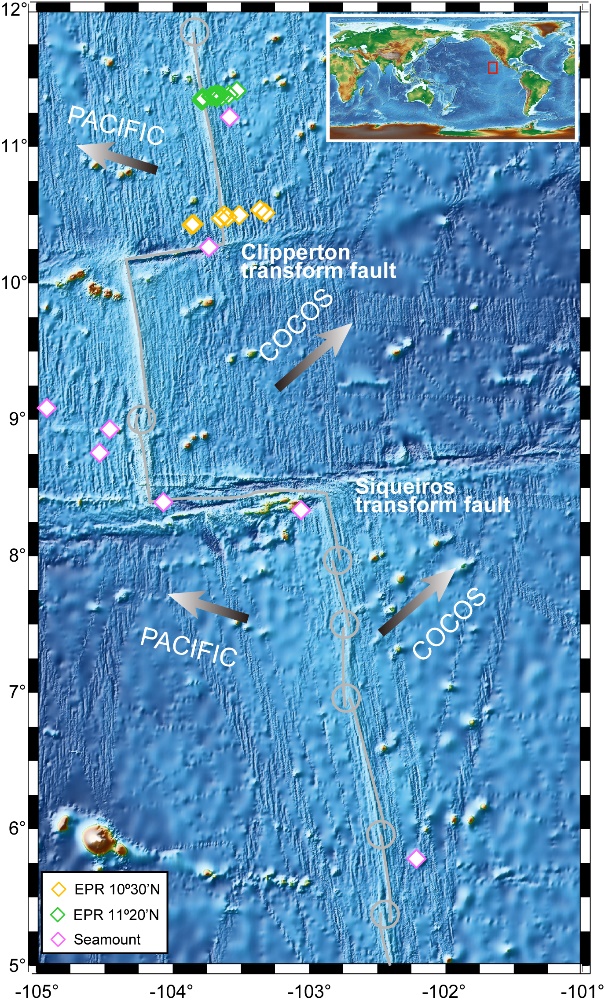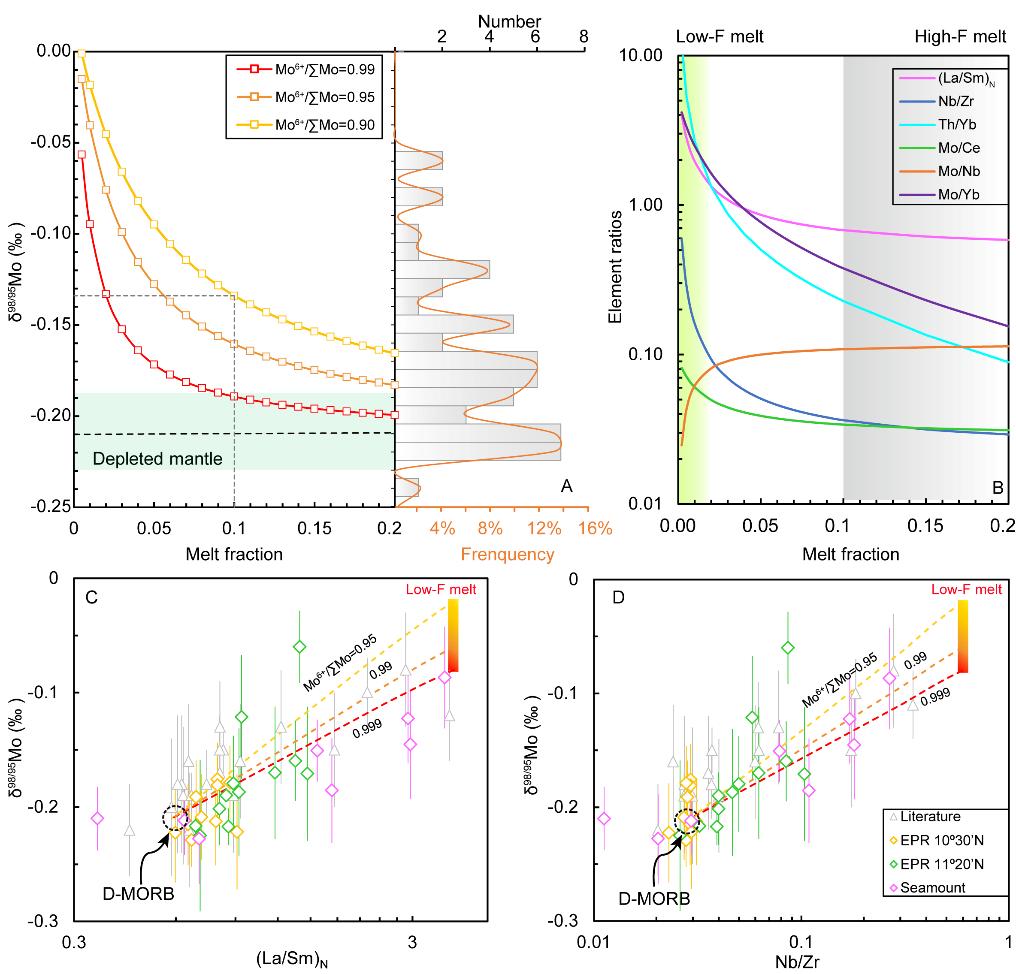Studies of mid-ocean ridge basalts (MORB) and near-ridge seamounts have shown large sub-ridge mantle compositional heterogeneity on various scales. Their origin has been highly debated, with interpretations including source region addition of recycled crustal materials, mantle wedge materials and low-degree melt metasomatism.
Combination of stable Mo isotopes and radiogenic isotopes have great potential for studying mantle heterogeneities, especially those subduction-related processes. However, the current Mo isotope database for MORB is very small and the possible effects of magma generation and evolution on Mo isotopes remain debated.
Recently, Dr. CHEN Shuo and SUN Pu from Institute of Oceanology, Chinese Academy of Sciences (IOCAS), conducted collaborative research on Mo isotopes with Prof. NIU Yaoling from Durham University, Prof. Tim Elliott from University of Bristol and Dr. Hin Remco from University Bayreuth.
The study was published in Earth and Planetary Science Letters.
Researchers presented a comprehensive study of the Mo isotopic compositions on well-characterized MORB samples on and off-axis across morphologically typical ridge segments of the East Pacific Rise (EPR) and seamounts lavas on the flanks of the EPR between 5°N and 12°N. They found large Mo isotope variations in the MORB samples, which are unlikely caused by MORB melt generation and evolution processes but reflect mantle isotopic heterogeneity.
They showed that MORB Mo isotope compositions vary systematically with geochemical parameters indicating mantle enrichment, which are most likely resulted from two-component mixing between an incompatible element depleted endmember with low δ98/95Mo (~-0.21‰) and an incompatible element enriched endmember with high δ98/95Mo (~-0.05‰).
In light of the association of heavier Mo isotopes composition with the geochemically more enriched MORB, they ruled out the prevailing model of recycled ocean crust with or without sediment. Instead, based on their new data and modeling, they suggested that the enriched endmember is most consistent with localized low degree melt enrichment (metasomatism) within the depleted MORB mantle, most likely at the lithosphere-asthenosphere boundary (LAB) in Earth's history.
They thus confirmed that recycled oceanic mantle lithosphere, metasomatized by low degree melt, plays a key role in the formation of enriched MORB (E-MORB) source lithologies. In addition, they also highlight Mo isotopes can be an effective tool for studying upper mantle processes.
This work was funded by the National Natural Science Foundation of China, NSFC-Shandong Joint Fund for Marine Science Research Centers, grants of Youth Innovation Promotion Association, Chinese Academy of Sciences and the 111 Project.

Fig. 1 Simplified map of the EPR between 5° and 12°N and samples investigated for Mo isotopes in this study. Base map is generated using GMT software.

Fig. 2 Non-modal batch melting modelling on both incompatible trace element ratios and Mo isotope composition of melt
Chen, S.*, Sun, P.*, Niu, Y.L., Guo, P.Y., Elliott, T., Hin, R.C. (2022). Molybdenum isotope systematics of lavas from the East Pacific Rise: Constraints on the source of enriched mid-ocean ridge basalts. Earth and Planetary Science Letters, 578, 117283. https://www.sciencedirect.com/science/article/pii/S0012821X21005392.
Chen, S.*, Hin, R., John, T., Brooker, R., Bryan, B., Niu, Y., Elliott, T. (2019). Molybdenum systematics of subducted crust record reactive fluid flow from underlying slab serpentine dehydration. Nature Communications, 10(1), 4773. https://www.nature.com/articles/s41467-019-12696-3.
CHEN Shuo
Institute of Oceanology
E-mail: shuochen@qdio.ac.cn
(Editor: ZHANG Yiyi)
|
|

Address: 7 Nanhai Road, Qingdao, Shandong 266071, China
Tel: 86-532-82898902 Fax: 86-532-82898612 E-mail: iocas@qdio.ac.cn


